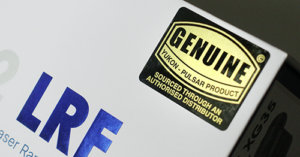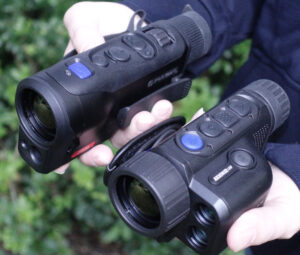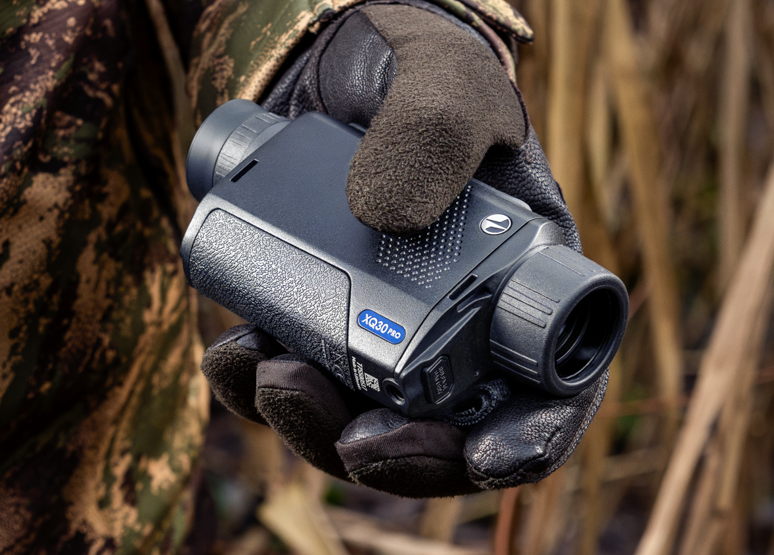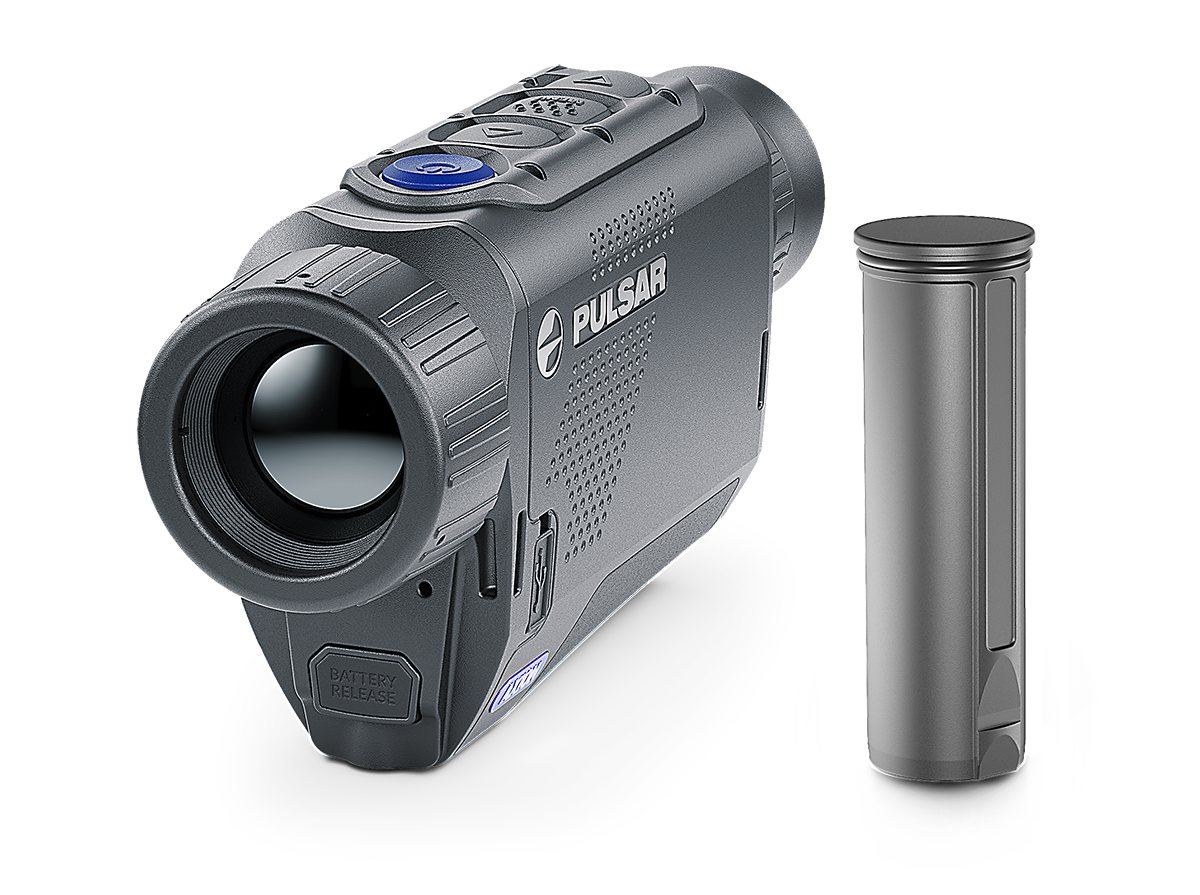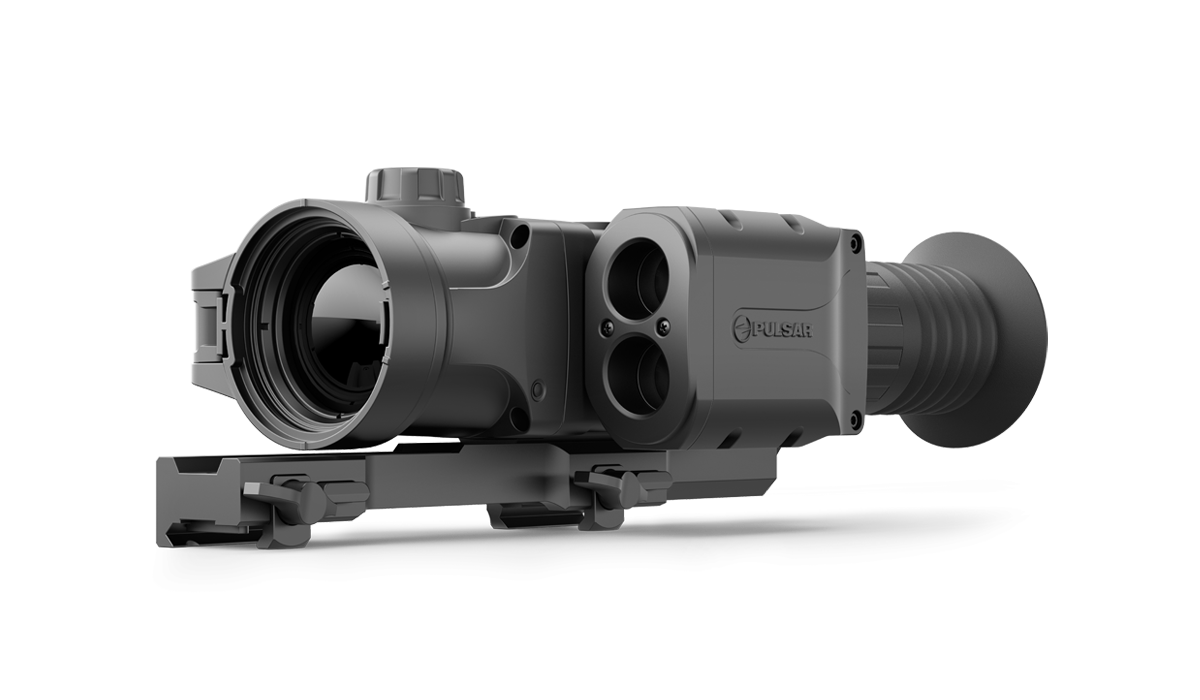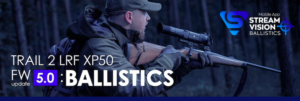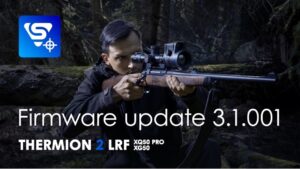Optics for recreation and home security
MADE IN EUROPE.
CHOSEN BY PROFESSIONALS.
Advanced Optics bringing you Pulsar thermal imaging and night vision optics since 2011.
Pulsar are 1st choice amongst outdoor enthusiasts who only want the very best gear for sport and recreation.
For sales, warranty and aftercare, ensure that your Pulsar product is purchased from an Authorised New Zealand dealer.
Sensor performance
Pulsar exclusively use sensors manufactured by global leaders Lynred.
In the past, Pulsar advertised the native sensitivity of Lynred sensors, which is not the actual NETD of the thermal imaging system, which, due to Adapted Noise Reduction, produces a far higher sensitivity. All Pulsar thermals now advertise the actual NETD of each device.
As well as sensitivity, Lynred sensors are used in a wide range of professional and defence applications. Lynred sensors are accredited to MIL_STD-883 / MIL-STD810 and Thermal Weapon Sight qualified for proven performance.
Lynred sensors are designed for reliability under harsh conditions.
Pulsar exclusively use Lynred sensors
Global leader Lynred manufactures the widest range of advanced infrared detectors.
Pulsar exclusively use Lynred thermal sensors for performance and reliability.
See the Lynred video to learn more about their vast experience in a wide variety of applications.
Why buy NZ authorised Pulsar products?
See our authorised dealer list to ensure that your Pulsar product is covered by a warranty and for future repair and servicing.
Only products sourced through the authorised New Zealand distributor (Archetype Precision Systems Limited T/a Advanced Optics) are eligible for warranty, servicing and repair. Authorised territorial distributors have access to the Pulsar factory repair facility and spare parts. Serial numbers are checked by the factory before any goods can be sent for repair to ensure that they were supplied through the authorised distributor.
Since 2012, all authorised Pulsar product packaging features a gold Genuine label. Due to our agreement with our supplier, we can only handle and service products with serial numbers matching goods supplied by the Pulsar factory.
If you have been mislead by a grey product vendor into believing that your goods are warrantied, you may need to use the Disputes Tribunal to recover your loss from them if your product requires warranty or accident repair.
Buying second-hand Pulsar products
The warranty is transferable to the new owner of a used authorised Pulsar product. Contact us with the serial number so that we can advise if the product is still under warranty or if the product is a grey import.
Click here for Authorised New Zealand dealers
NZDA member specials. Click logo for more info.
NEW PRODUCTS
Pulsar Axion XQ19 Compact
A thermal monocular with great performance and price. Available now!
Pulsar Oryx LRF XG35
Pulsar’s latest compact laser rangefinder thermal monocular. Available now!
Pulsar Oryx LRF XG35 review
The Fishing Paper and Hunting News, April 2025.
Pulsar Oryx LRF XG35
First impressions of Pulsar’s new compact thermal imager.
The new Pulsar Oryx LRF XG35 was launched earlier this year at IWA in Europe. It replaces the highly popular Axion 2 LRF XG35, which was Pulsar’s premium compact thermal monocular with a laser rangefinder. Therefore, the Oryx has pretty large boots to fill.
Shape and ergonomics
The Oryx is slimmer than the Axion 2 LRF, with the laser rangefinder now built into the front of the device. Its hand strap can be fitted on either side for ambidextrous use.
The control layout is as follows:
- Focus is now controlled by a very smooth and precise wheel that is in front of the eyepiece.
- The Menu button is situated at the back of the three-button control panel. It has small buttons on each side for selecting features and changing values. The left button also controls image amplification and swaps image polarity. The right button controls magnification and enables Picture-in-Picture.
- The middle button controls the laser ranger finder.
- The front button controls video and stills recording.
- The On/Off button is in front of the control panel.
All buttons are set below the top profile of the Oryx to prevent accidental activation.
1500m Laser rangefinder
The laser rangefinder ranges to 1500 metres. My initial test on a warm, sunny day ranged a bush at 719m. Later, under cloudy conditions, I ranged a hedgerow at 1496m. Though these long distances may not always be needed, this rangefinder will perform better in adverse conditions.
New features
These features were not available on the Axion 2 LRF:
- Image stabilization. This feature is currently only available on the high-end Pulsar Merger LRF XT50 and is a very welcome addition. It works extremely well, especially on higher magnifications.
- Internal back-up battery. Powered by a high-capacity quick-change APS-5 European made Li-ion battery that is very easy to remove and replace. The device remains on while changing battery and provides an operation time of up to 12 hours.
- Proximity sensor. Activates sleep mode when removed from the eye and starts-up immediately when returned to the viewing position, extending battery life and prevents light spill from the eyepiece at night.
- Belt clip. I am not sure how well this works yet, but it is easy to remove. I prefer a neck strap.
Existing features
- Lynred ATTO640-02 sensor. Ultra-reliable and proven 640×480 / 12 µm / 50Hz, producing a system NETD <20mK and manufactured in France by Lynred.
- Precision ground F35mm f1.0 lens. A well proven lens that delivers excellent image quality.
- Magnesium alloy body. Very strong and solid with outstanding internal heat sinking.
- Magnetic lens cap holder. The lens cap fixes to the hand-strap with an inbuilt magnet.
- IP67 waterproof. Same as IPX7 waterproof rating (when battery is installed) and common on all Pulsar devices.
- All other operational features and imaging functions. The Oryx LRF has the same operational features as other Pulsar thermals.
I may have missed few things because I didn’t have a manual available at the time of writing. Looking through the device, the image is bright, clear and highly detailed, typical for a Pulsar thermal.
The new Pulsar Oryx LRF XG35 retails for NZ$4,599, which is exactly $1000 less than the Pulsar Axion 2 LRF XG35 and yet, the Oryx simply blows its predecessor out of the water for features and functionality.
Pulsar product prices have fallen since the establishment of a second factory in Latvia, due to increased manufacturing capacity, while maintaining high quality standards. The Oryx LRF is manufactured in Vilnius.
What it is good for
It has a very good field-of-view (21.9m @ 100m) due to its 35mm lens and 640×480 sensor, lending itself to optimum performance at short to medium distances. The Oryx LRF has a human detection range of 1800m and good spatial resolution. It is ideal for general hunting and stalking in reasonably good conditions and has a powerful, accurate laser rangefinder.
What it is not good for
Long distance viewing requires a longer focus lens, 50mm for example. If you are scanning hillsides in wide open country, the Oryx would not be the best choice. If weather conditions are poor, or animals are obscured by long grass or foliage, all 12µm sensors will not have sufficient penetration. In these conditions, a Pulsar Merger LRF XP35 with its 640×480 / 17µm sensor is far superior.
Finally
Despite the Oryx’s fine looks and finish, this European made thermal is built like a tank and will provide many years of decent service. I still have Pulsar thermals that are 10 years old that still work fine. In our throw-away society, it is good to know that your investment is a good one.
I am taking this Pulsar Oryx LRF out for the roar and will hopefully bag a deer, a pig, or knowing my luck, nowt! But I’ll give it my best shot anyway.
Watch out for future articles in The Fishing Paper and Hunting News.
Pulsar Oryx LRF XG35 laser rangefinder
A new powerful and accurate 1500m laser range finder is an advantage because it will range further in poor conditions. I was able to range a hedgerow at 1496m in cloudy conditions.
Pulsar Oryx LRF and Axion
The Pulsar Oryx LRF XG35 (left) and the Axion 2 LRF XG35 (right) are similar in size, though the Oryx is considerably slimmer, easier to hold and operate, especially for left-handed users.
Pulsar Thermion 2 LRF 60 series
The best of the best just got better. The new Thermion 60 series has:
- Longer focal length lens for better identification and precise shot placement
- New 2560×2560 UHD Micro-OLED display for better image quality
- New eyepiece design with longer eye relief and better image detail
- Now supplied with an APS3 battery for extended time performance
- 64GB video storage.
Zac shot the first deer worldwide with a factory sample Thermion 2 LRF XL60 in October 2024. Watch the video to see him in action.
Features
VIDEO - Shooting Wallabies with Thermal
Wallabies are an ongoing problem in New Zealand. This short video is set in Rotorua.
VIDEO - Clarke Boys- culling deer with Pulsar
See the Clarke Boys culling deer with a Pulsar Thermion 2 LRF XP50 and Pulsar Telos LRF XP50.
Pulsar Axion XQ30 Pro
Power at a bargain price. Watch the video for more info.
Pulsar Axion XQ30 Pro review
Fishing Paper and Hunting News.
Optically Speaking August 2024
Last month, I outlined the advantages of using a hand-held thermal monocular on DOC managed land. Just to recap, they are:
- Safer target identification
- Carcass and wounded animal recovery
- Pre-hunt reconnaissance
- Spotting and stalking.
This month I would like to discuss the new Pulsar Axion XQ30 Pro thermal monocular that is manufactured in Pulsar’s new factory in Latvia. This thermal is the lowest priced in Pulsar’s range and ideally suited for bush stalking and general hunting. The New Zealand Police recently evaluated the Axion XQ30 Pro and purchased 16 units, which is testament to its performance and Pulsar’s reputation amongst professional users.
Pulsar Axion evolution
The original Pulsar Axion XM30 was launched in 2019, becoming an immediate success with hunters due to its ultra-compact size and entry-level cost. All XM Axions were fitted with a Lynred 320×240 12µm sensor, while the new Axion XQ30 Pro is fitted with a Lynred 384×288 17µm <25mK sensor. This is a significant performance upgrade, providing better image quality and deeper foliage, rain and mist penetration.
Other hardware features include a Mg-alloy housing that is robust, fully waterproof with excellent internal heat dissipation, precision ground 30mm f1.2 Germanium lens, AMOLED 640×480 display and a lens cap that magnetically attaches to the hand strap to keep it out of the way while in use. Its operational functions are now the same as all other Pulsar thermals, such as video recording and streaming, updatable firmware, multiple colour palettes to name a few.
The device is powered by an APS3 battery, which is easily removed by pressing a button on the front of the unit. Run time for a battery is over 6 hours in winter, though extra batteries are modestly priced, last many recharging cycles and will keep you hunting for longer.
The Axion is very light and compact, while the ergonomics are very good with easy-to-use control buttons, precise objective and ocular lens focussing, and a comfortable hand-strap. Its small size is easily slipped into a pocket and its build quality is typical Pulsar, solid and very refined.
What it’s good for
The Axion XQ30 Pro has a 2x magnification and a field-of-view suitable for use in bush, forestry and farmland. It is very handy when walking long distances without taking up much space.
The image quality is the best that I’ve yet seen in an Axion, very similar to its higher cost stablemate the Axion 2 XQ35 which uses the same sensor. I spotted cattle at +1200m, rats at +100m and possums at +200m, though to be fair, it was a little misty at the time. At these distances, the respective animals were small ‘blobs’, but identification was made by the way each animal moved. I was impressed because the performance exceeded my expectations, having used the previous Axion XM30 models many times.
Observing my son walking in native bush at around 60m, I could clearly see him as an upright walking critter, despite him being invisible to my naked eye. There is no way that I could have mistaken him for a deer. The Axion’s new Lynred sensor certainly gets my thumbs-up for foliage penetration.
What it’s not good for
Distance performance is limited, so if you need to spot and identify animals at greater distance, there are better options in the Pulsar line. Long distance performance requires larger optics and/or a bigger sensor. Safety is foremost and it’s the hunter who pulls the trigger, not the optic. Bide your time, get closer and identify your target beyond doubt.
The Axion’s lack of a laser rangefinder is not such a problem in daylight when an optical laser rangefinder can be used. On private land at night, the Axion’s interactive stadiametric rangefinder is sufficient for shooting deer with a flat shooting rifle at closer distance; simply preset the range and approach until the animal fits the stadia marks. If a laser rangefinder an important consideration, the Pulsar Axion 2 LRF XQ35 or Telos LRF XQ35 are better alternatives.
My conclusion
I’m lucky in that I have access to a wide range of Pulsar thermals, ranging in price from the Axion up to the ‘high-end’ Merger LRF XL50. I like them all in their own unique way, but if I’m out walking around my own property, long distance performance is less important than foliage and inclement weather performance. My paddock is around 375m long and the rest of the property is a mix of plantation forest, native bush and tracks, perfect territory for the Axion XQ30 Pro.
At $2599, the Axion XQ30 Pro is excellent value-for-money, very well built and like its predecessors, will provide many years of reliable service.
News
HOT NEWS - Hand-held thermal imagers now allowed on DOC managed land
Hand-held thermal imagers are now allowed on Department of Conservation managed land. This is very welcome news for promoting safety through positive target identification and tracking wounded animals.
Click here to read the DOC press release
Pulsar NZ repairs and servicing now available
At the end of 2022, our repair staff undertook training with Pulsar technicians at the Pulsar factory in Vilnius, as well as ongoing online training and refresher courses that covers both past and current products. This has reduced waiting times for many common issues from an eight to twelve week turn-around to under two weeks in most cases.
As well as staff training, we have invested in specialised equipment such as collimators and a soon to be installed recoil tester, an inventory of spare parts and our dust filtered, climate controlled repair facility.
More complex repairs may still require factory servicing. We will consult with you regarding this and possible costs for out of warranty and damaged goods.
New Pulsar Trail 2 LRF Stream Vision Ballistics update
Pulsar Trail 2 LRF thermal riflescopes can now benefit from a dynamic, rangefinder linked point-of-impact indicator.
Check your Stream Vision 2 App and update to the latest Firmware release.
To enable ballistic calculations on your Trail riflescope, please follow these step-by-step instructions:
- Download the newest updated version of the Stream Vision Ballistics mobile application to your mobile device.
- Create a ballistic profile (or several if you need more than one) following the instructions provided in the mobile application.
- Connect your scope to the Stream Vision Ballistics mobile application via Bluetooth.
- Using the Stream Vision Ballistics app, upload the ballistic profiles to the riflescope. Now you can disconnect from the app.
- Measure the distance with the laser range finder in two short presses. The first press activates the LRF, the second measures the distance and activates ballistic calculations inside your riflescope.
- An indication of suggested point of aim will appear on your riflescope’s screen.
For more information about Stream Vision 2 and Stream Vision Ballistics, click the link below.
New Stream Vision Ballistics update for Thermion 2 LRF models
Firmware update 3.1.001: ballistic calculations for more Thermion 2 LRF users
Yukon Advanced Optics Worldwide is pleased to announce the firmware update 3.1.001 for more Pulsar riflescopes, namely Thermion 2 LRF XQ50 Pro and Thermion 2 LRF XG50. Just like the previously released update for the Pulsar flagship riflescope Thermion 2 LRF XP50 Pro, this update enables you to use the ballistic calculations for accurate long-distance shooting and to pair your devices with the new Stream Vision Ballistics mobile application.
Please make sure you use the newest updated version 1.0.3 of the mobile application to ensure the correct use of ballistic calculations.
Accuracy at longer distances
Both above-mentioned thermal imaging riflescopes feature precise laser rangefinder and higher base magnification, meaning, they are perfect for accurate aiming at longer distances. That’s where ballistic calculations become essential. Knowing your ballistics allows you to quickly assess the bullet drop and instantly react to various occurring hunting scenarios.
Enriched with ballistic calculations
The newest update delivers a ballistic algorithm that allows you to calculate the trajectory of a bullet and displays the suggested point of aim on the screen of your Thermion. This function requires activation in the LRF settings in the main menu of the scope.
To pair your Thermion with the new Steam Vision Ballistics application, you will need to activate the Bluetooth connection on your scope, which you can now find in the main menu bar.
The full-featured new mobile application by Pulsar allows you to create several individual ballistic profiles and upload them to your thermal scope. Once the profiles are successfully uploaded to the riflescope, you can disconnect from the app. The calculations are done by the scope itself.
Optimized workflow of the LRF
The firmware update 3.1.001 will enable additional indications of the measured distance in the centre of the screen next to the reticle. This additional function can be enabled in the main menu of the device.
We have also optimized the use of the laser rangefinder for greater comfort. Two short presses on the LRF button is all you need to get precise distance assessment. The first press activates the LRF, the second measures the distance and activates ballistic calculations if this function is turned on in the main menu.
Flawless use of digital zoom
Moreover, the newest firmware update will make the switch between different zoom levels almost as smooth as if using an optical zoom, making it easier to keep the eye on the target while zooming in.
We have also adjusted the zoom step of precision zoom for more comfortable observation. Now the increment step increases the higher the magnification gets.
The new Stream Vision Ballistics mobile application can now be paired with the following Pulsar riflescopes:
- Thermion 2 LRF XP50 Pro
- Thermion 2 LRF XQ50 Pro
- Thermion 2 LRF XG50
All new Thermion 2 LRF riflescopes have the latest firmware pre-installed.
For more information about Stream Vision 2 and Stream Vision Ballistics, click the link below.
Support the volunteers at Coastguard New Zealand. One day you or a loved one may need them: https://www.coastguard.nz/donate-now/
